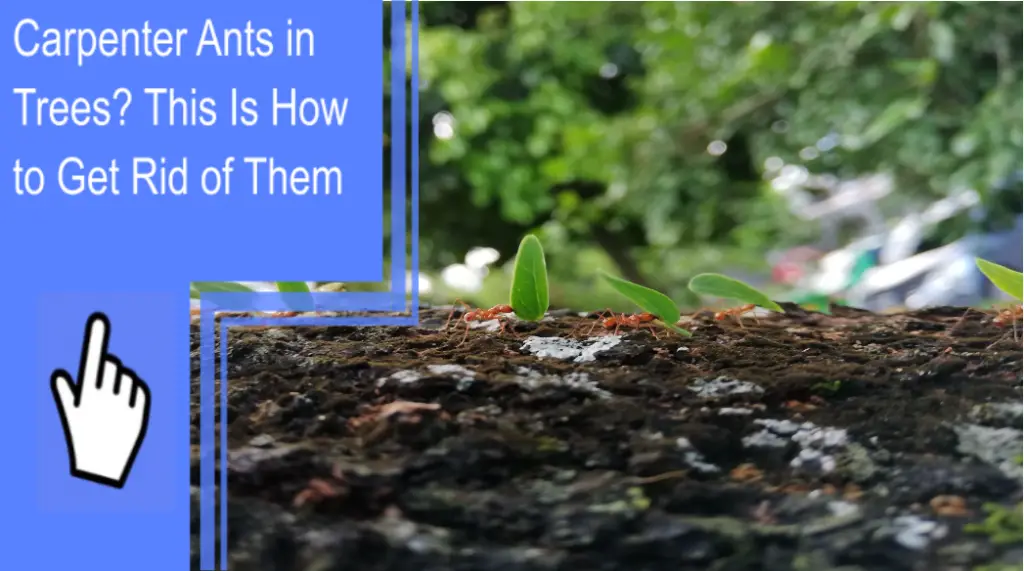What you find on this page:
According to National Geographic, more than 10,000 ant species live in different conditions around the globe. Each species differs in size, shape, color, and other adaptations to thrive in various geographical areas.
If you have recently spotted ants moving through your garden in the warmer months of spring and summer, there is a big chance some of them are carpenter ants. Some people associate ants with a household infestation, but carpenter ants render havoc in trees.
So, do you know how to get rid of carpenter ants in trees? Learn how to eradicate these destructive critters in this detailed guide.
What Are Carpenter Ants?
The colossal size and distinct color shades of black and brown are the defining characteristics of carpenter ants. Usually 0.5inches to 0.63inches, they are larger than other species and have distinctive coat color, which means they are all black, brown, or red. Surprisingly ant experts have also spotted yellow ones.
The name carpenter ants come from the behavior of these ants of quickly burrowing tunnels through moist or rotten wood.
Unlike termites, they don’t feed on the wood, sticking to the ordinary diet of proteins and sweet foods. They make burrows to ease movement and also create a colony nest. Being social insects, carpenter ants live in colonies of 20,000 to 50,000 ants.
Can Carpenter Ants Kill a Tree?
A common question in the minds of responsible gardeners is, can carpenter ants kill a tree? Yes, an all-out infestation by a large colony of ants can kill a tree, but there is a better chance of that tree dying from a fungal attack than being killed by a group of carpenter ants.
Ants live on trees almost always and go unnoticed because they cause little or no harm to them. So, don’t worry when you see a handful of these insects at the foot of healthy trees.
Carpenter ants are opportunists taking advantage of trees damaged by other things such as:
- Lightning strikes
- Pruning wounds
- Woodpecker holes
- Wind breakage
- Fungi attack
- Wounds resulting from forces such as lawnmower bumps
These factors expose the trees to weather elements such as moisture which initiates the rotting process creating the right living conditions for carpenter ants.
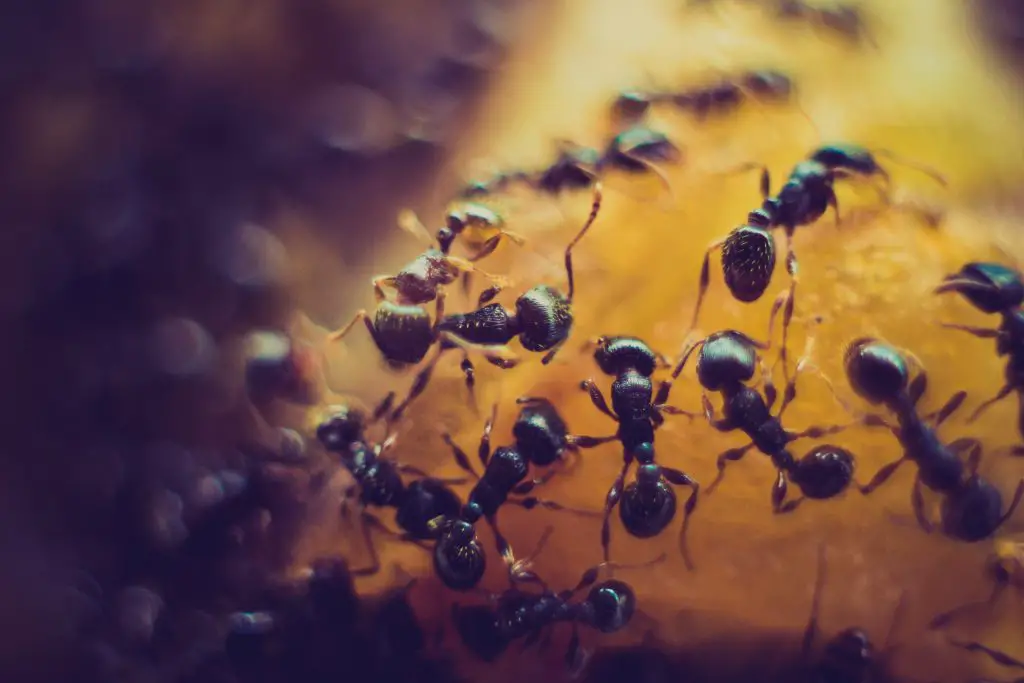
Carpenter Ant Tree Damage
Can a carpenter ant cause tree damage? One thing you have to remember is that carpenter ants pose no threat to perfectly healthy trees. But you may want to argue that you spotted a pile of carpenter ants sawdust in your garden this morning. Well, the tree was probably damaged well before the destructive insects arrived on the scene.
The carpenter soldiers love creating pathways and nests in damaged tree areas and on dead and dying logs. While excavating the dead sections to build a nest, they may also eat into the structurally healthy areas causing more damage.
Continued activity of this kind under the barks and tree roots may cause the tree to wither and finally die. Please continue reading to find out how to get rid of carpenter ants in trees.
Signs of Carpenter Ants in Trees
Below are the tell-tale signs of carpenter ants in trees.
Gigantic Ants
How do you tell that a visitor has arrived? Of course, by seeing the visitor. Big black, brown, red, or yellow ants aren’t inconspicuous, and one can spot them from a mile away trundling up and down the tree trunks. You will see them as they go about their daily activities in the garden.
Frass
Typically, the ants may form a colony underground and avoid appearing on the surface if it doesn’t suit them. The only way to detect their presence in such circumstances is by spotting carpenter ants sawdust, professionally known as frass.
The ants dig sandpaper-smooth tunnels inside the soft, moist parts, and since they don’t consume the stuff, they dispose of it on the outside. The frass contains wood particles, some dead worker ants, and dry remains of insects that the carpenter ants have feasted upon.
Rapid Tree Deterioration
Carpenter ants will live on your trees for as long as they want with minimal damage to the tree. However, if there are soft, moist parts, they will take advantage of the situation and eat into those areas. A colony of 50,000 carpenter ants can render irreparable damage to the bark and twigs, which will be manifested by rapid gradual withering.
Other signs of infestation include carpenter ant holes in trees. Usually, these holes serve as entrance/exit points to thousands of worker ants and the queen, who can live up to 25years.
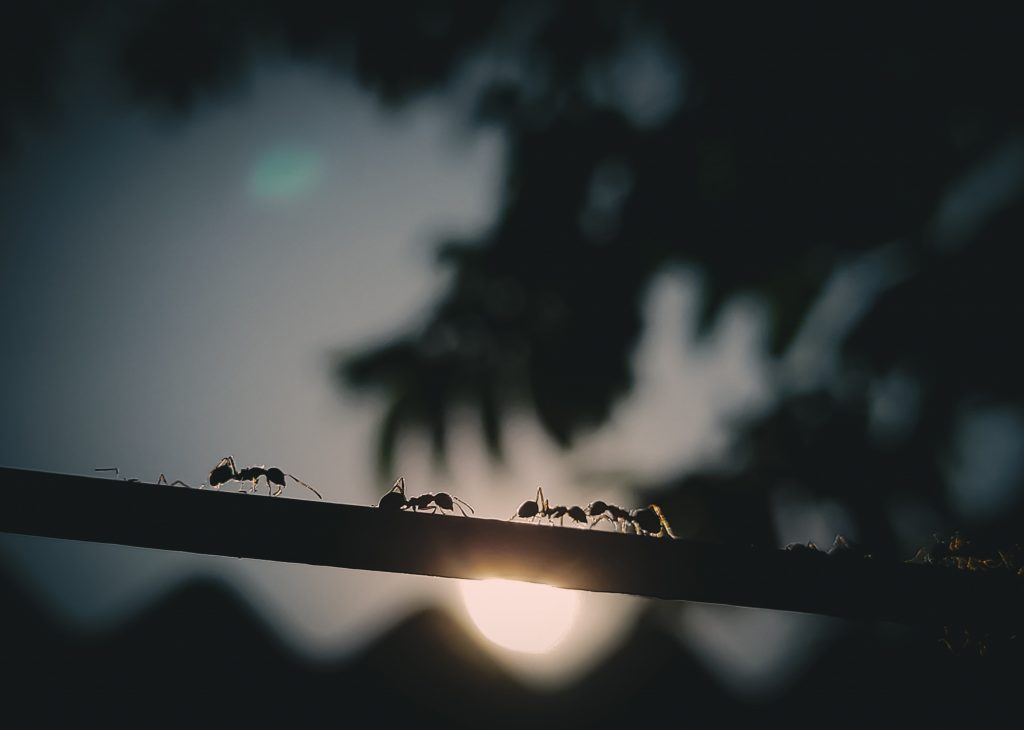
How to Kill Carpenter Ants in a Tree?
So, what are the next steps after spotting a carpenter ant nest in your trees? And, do you know how to save a tree from carpenter ants? Here’s how to kill these ants.
Use Insecticides
The main goal when using insecticides is killing the queen, which makes the colony helpless because she is the center of authority. This will throw confusion among the insects, make them vulnerable and ensure no more will be hatched as there is no queen to lay the eggs.
Look for a hole mainly at the bottom of the trunk where these critters pass. If you cannot detect one, you need to keep scraping around the tree until you find the entrance.
Once you find the main entrance, make tiny holes around it. Soak or dust the area with pesticides that contain imidacloprid or fipronil. These chemicals kill carpenter ants almost immediately.
Surviving ants will carry the insecticide into the nest, consequently poisoning the remaining ants. If you can’t make out where the insects are coming from, use the following method.
Use Baits
Carpenter ants live on the main colony but may have satellite colonies that may be hard to control. You can use baits to kill such colonies.
Baits are small tubes made of different materials, including plastics that contain poisonous chemicals for carpenter ant elimination.
Ants have a sweet tooth preferring a diet of sugar and protein-rich foods. You can easily lure them with mealworms or sweets laced with boric acid. Worker ants are likely to come across it and carry the food back to the nest, killing more of their kind in the process. Be careful when using the acid because it can damage your hands and kill your pets.
Pest Removal Company
Call a pest removal company if you aren’t confident in your pest elimination skills. It’s much effective and safer that way.
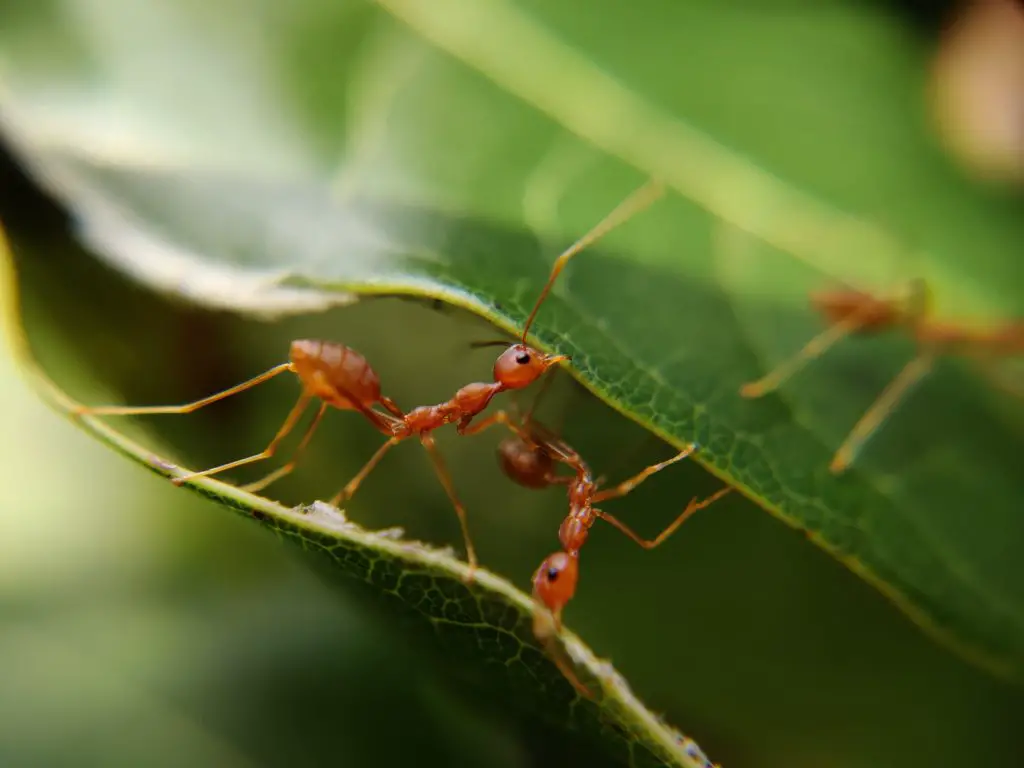
Home Remedies for Carpenter Ants?
If using poisonous chemicals isn’t your cup of tea, or you want to protect the environment, here is how to get rid of carpenter ants naturally:
Boiling Water
There’s no better treatment for these trouble-causing insects than the good old bubbling hot water. Boil a few liters of water and add some essential oils to make the remedy more effective. Find the entrance hole and pour the water directly into the nest. Be careful not to get scalded in the process.
Sugar and Baking Soda
Baking soda is chemically poisonous to ants, and sugar attracts them into the mixture. Mix two parts of these substances and strategically place this trap in areas with carpenter ant traffic. It would be best if you had made a note of this area in your garden by now.
Vinegar
Vinegar is one of the most effective natural pesticides you can find at home. Mix equal parts of vinegar and water and put the mixture in a spray bottle. The best time to spray for carpenter ants is when they are most active, especially if you couldn’t find the nest.
Soap and Water
Soap is chemically poisonous to ants and other pests. Make a mixture of natural soap for washing dishes and water and put it in a spray bottle. Spray whenever necessary.
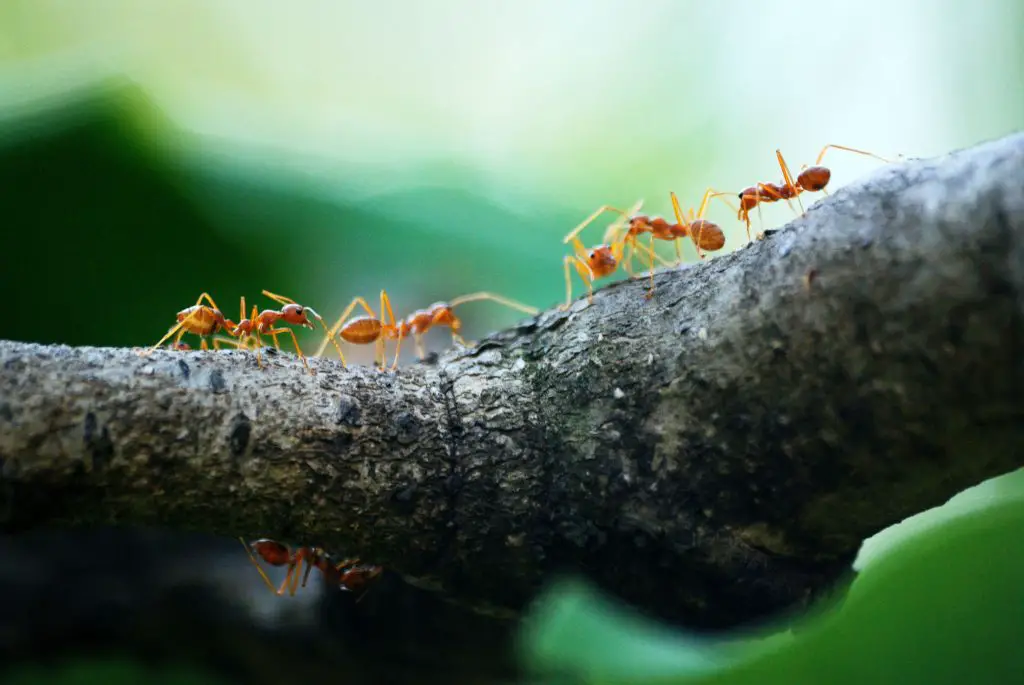
How to Prevent Carpenter Ants in Trees?
Prevention is perhaps the best way of deterring carpenter ants from eating trees. Use the following methods to protect your garden trees from carpenter ants infestation.
Cinnamon and Cinnamon Oils
Carpenter ants use the sense of smell to find their way around and find food. Essential oils such as cinnamon interfere with the pheromone trails, and the ants cannot find their way back into the nest.
Dispense cinnamon powder or cinnamon oil at the base of the tree or routes these insects use.
Eliminate Unhealthy Trees
If the ants have damaged the tree excessively, you have to cut it down to save the neighboring trees.
Eliminate the dead logs and uproot decomposing tree stumps along with their extensive roots. Throw the wood far from your healthy trees, or better still, burn it to ash. This will destroy potential nesting sites and prevent future infestation.
Use Natural Insect Repellents and Glue
Lastly, consult with your local gardening expert on some of the best insect repellents to use on your trees. These repellents will keep the destructive carpenter ants away.
Another way to do away with carpenter ants naturally is using glue. Note that the glue will only kill those ants that get stuck and discourage the rest from scaling up the tree.
Conclusion
Carpenter ants are opportunistic ants that may damage an ailing or rotting tree. They eat into soft and moist trees and make their paths and nests, which may cause the tree to wither when they eat into healthy areas. If you are still wondering how to get rid of carpenter ants in trees, follow the steps outlined in this comprehensive guide.

